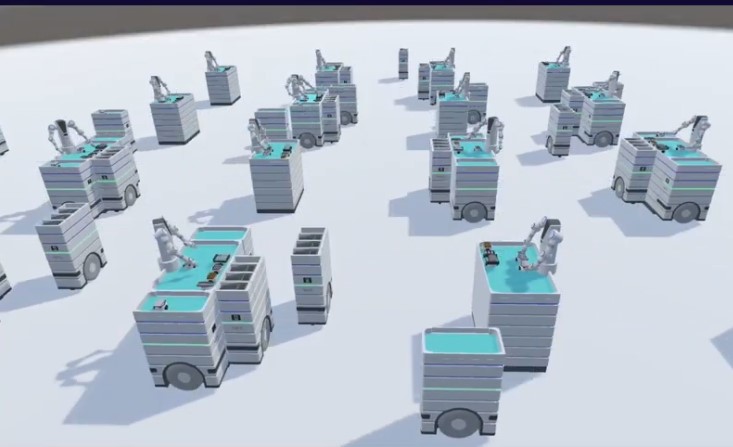5G will support factory automation and 5G speeds are being adopted more quickly every year. As I have mentioned before in this Industry 4.0 blog, 5G speeds will provide the backbone for automated factories and that is becoming more of a reality every day.
Imagine a factory where, depending upon what we order, the machines move into new configurations to build custom products. Another scenario is that AGV’s could deliver parts do individual workstations and robots or cobots would assemble custom items.
This is the scenario that NEC is imagining in their video of the factory of the future and can be found here. The communication to the individual machines that re-order themselves is possible because of 5G speeds within the factory.

Black and Decker Stanley is opening a factory of the future in Hartford, Connecticut. This factory will allow them to develop new technologies and provide upskilling of the workforce.

If everything in an Industry 4.0 factory is connected, the torque reading from a connected torque wrench can be added to the blockchain for each unit that is produced. These are the types of technologies these smart factories are working out.
Ericsson is building a factory in Texas that will build products that support the 5G roll-out for companies such as ATT, Verizon, Sprint and T-Mobile. They have built the factory to take advantage of 5G and automation to build millimeter-wave Street Macro base stations at the factory.
What are those? 5G wavelengths are a shorter wavelength that doesn’t travel as far. Base stations are required in buildings because the shorter wavelengths don’t do well penetrating objects, etc. Remember pictures of people attacking 5G antennas in Europe because they thought they could get coronavirus from the antennas? Yeah, that was a thing.
Ericsson is learning how 5G will support factory automation within the factory they are using to build 5G equipment. Pretty cool.
As far as 5G adoption goes, China, Germany, and Japan are the leaders followed by the US, South Korea and France. It is estimated, by 2025 that 48% of the US or 205 million users will adopt 5G devices.
If you recall, this is the big fight over Huawei providing 5G equipment to the world. We have obvious privacy concerns, but if I were to guess, I think if is also about money. The kind of trillions that would flow to a Chinese supplier of 5G products for the internet and cellular devices.
Building the infrastructure for those 5G devices from automated factories will have roughly a 1.5-2.2 trillion-dollar impact globally. Right now, that is more money than Elon Musk has, but who knows by then.
As always, it’s an honor to serve you, and I hope this helps you and your organization get a little better today.
Follow me on Twitter
Join me on LinkedIn
Listen to the podcast here
